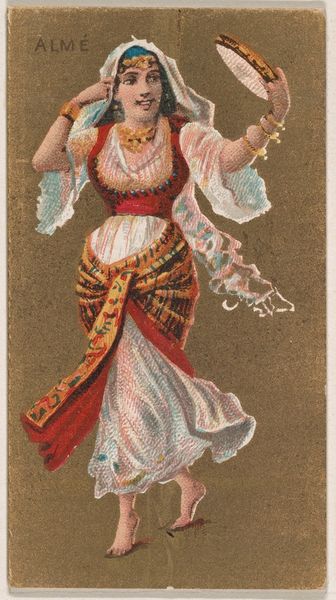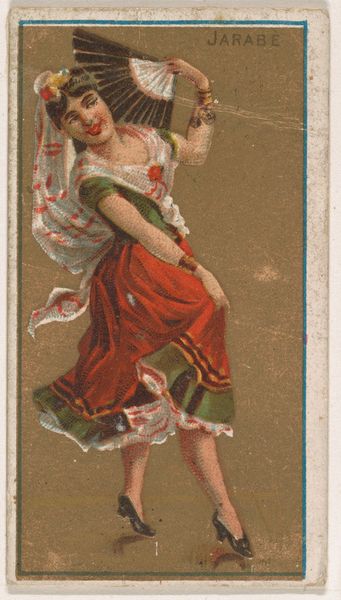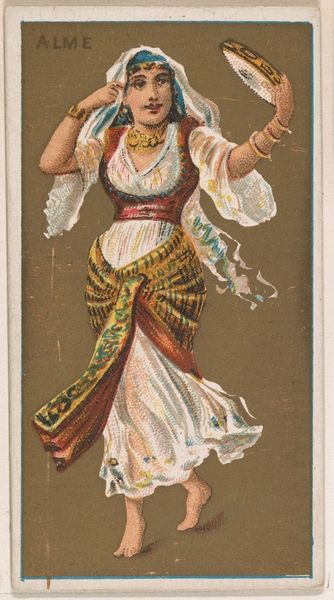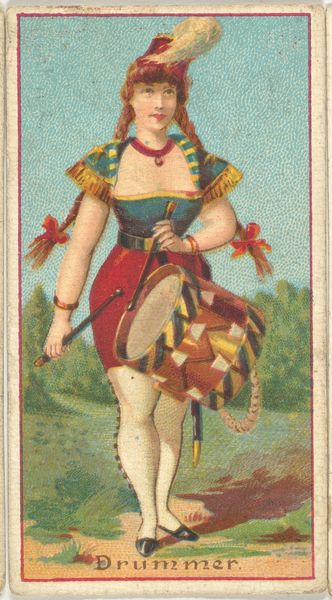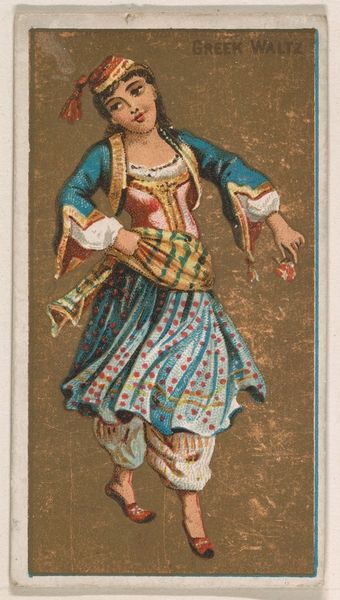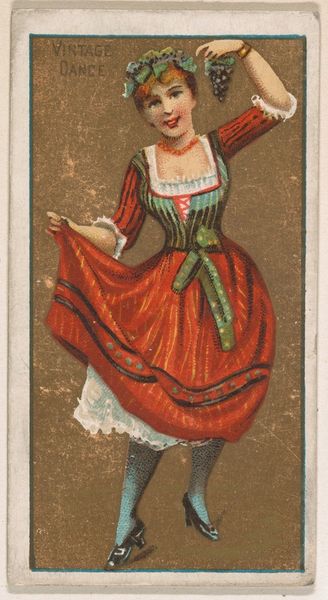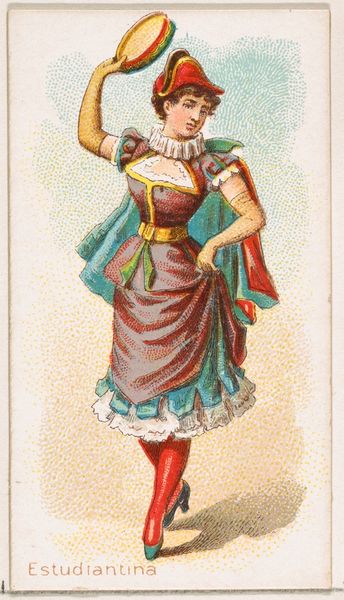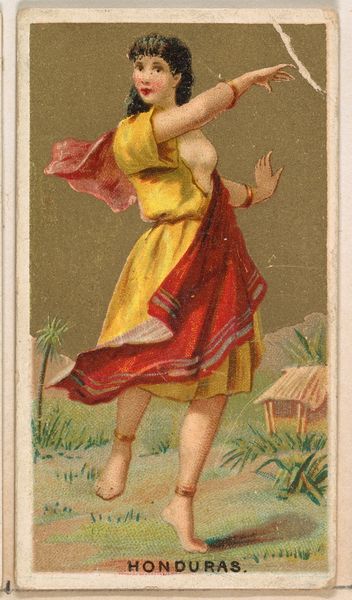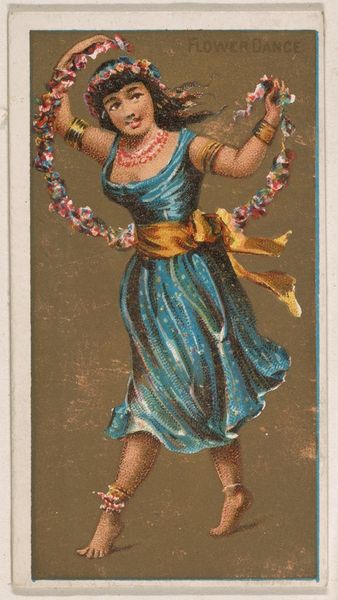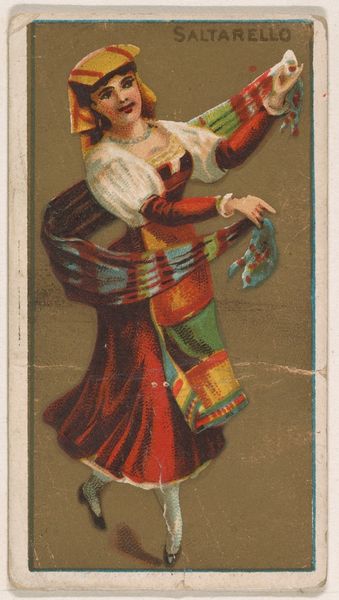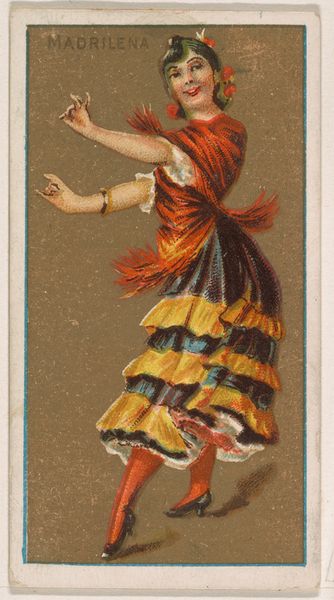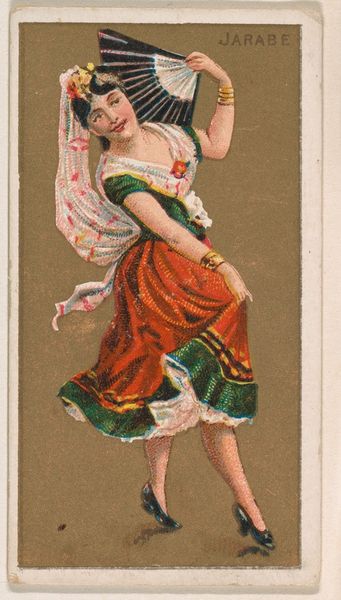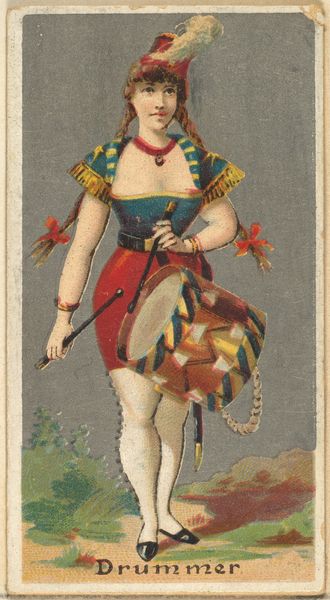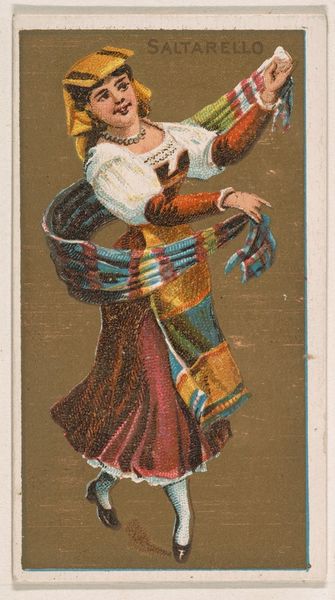
Shah's Birthday, Persia, from the Holidays series (N80) for Duke brand cigarettes 1890
0:00
0:00
Dimensions: Sheet: 2 3/4 x 1 1/2 in. (7 x 3.8 cm)
Copyright: Public Domain
Editor: This chromolithograph, entitled "Shah's Birthday, Persia," comes from a series made in 1890 by W. Duke, Sons & Co. for their Duke brand cigarettes. It feels almost dreamlike, this depiction of a dancer in what I assume is a royal Persian court. What strikes you about it? Curator: It's crucial to recognize these chromolithographs not just as aesthetic objects, but as artifacts deeply embedded in a history of cultural appropriation and imperialist gaze. The 'orientalism' on display reduces complex cultures to exotic stereotypes for Western consumption, reinforcing power dynamics. Editor: So, the dancer isn’t really being celebrated here, so much as, exploited? Curator: Exactly. Consider how the female figure is presented: veiled, adorned, and performing. How does this image participate in constructing a particular, perhaps inaccurate, vision of "Persia" for the late 19th-century American consumer? What does it tell us about how cultural difference was commodified and consumed? Editor: That makes a lot of sense. The fact that it's an advertisement almost solidifies that reading – Persia, or at least the idea of it, is something to be bought and sold. I hadn’t really considered it that way. Curator: It prompts questions about the role of art in perpetuating social and political hierarchies, right? Recognizing the work’s participation in systems of power, exploitation, and representation is the initial step to engage with art critically. Editor: It definitely gives me a lot to think about regarding visual culture, especially with its context here. Thanks for this viewpoint! Curator: It also shows how a seemingly simple image can unveil broader issues of identity, representation, and the ongoing legacies of colonialism.
Comments
No comments
Be the first to comment and join the conversation on the ultimate creative platform.
